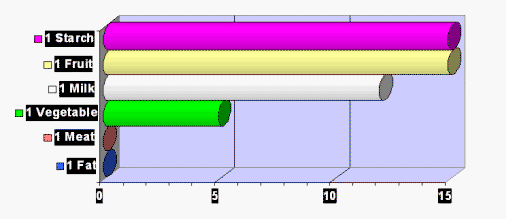|
Both the type and amount of carbohydrates consumed may affect blood sugar control. Carbohydrates are often classified as simple sugars, starches, and fiber. Typically, there is an emphasis on more complex carbohydrates, such as starches and fiber, to reduce the quick blood sugar response. However, the results of emphasizing one type over another is a bit controversial at this time and more research is warranted. Still, the amount of carbohydrate consumed may make a significant difference.
With “balance” as the key feature of dietary intake, we can start by evening out the amount that is consumed in each meal or snack. If treated with insulin, then the insulin and carbohydrate intake should match up well enough to maintain blood sugar control. We will discuss this further when we get into medication treatment.
According to
the American Diabetes Association, "There is no single
ideal dietary distribution of calories among
carbohydrates, fats, and proteins for people with
diabetes."(15) Many
clinicians rely on a food “exchange” system, which
identifies the level of carbohydrates in foods and
allows them to be
Rick Fields-Gardner |



